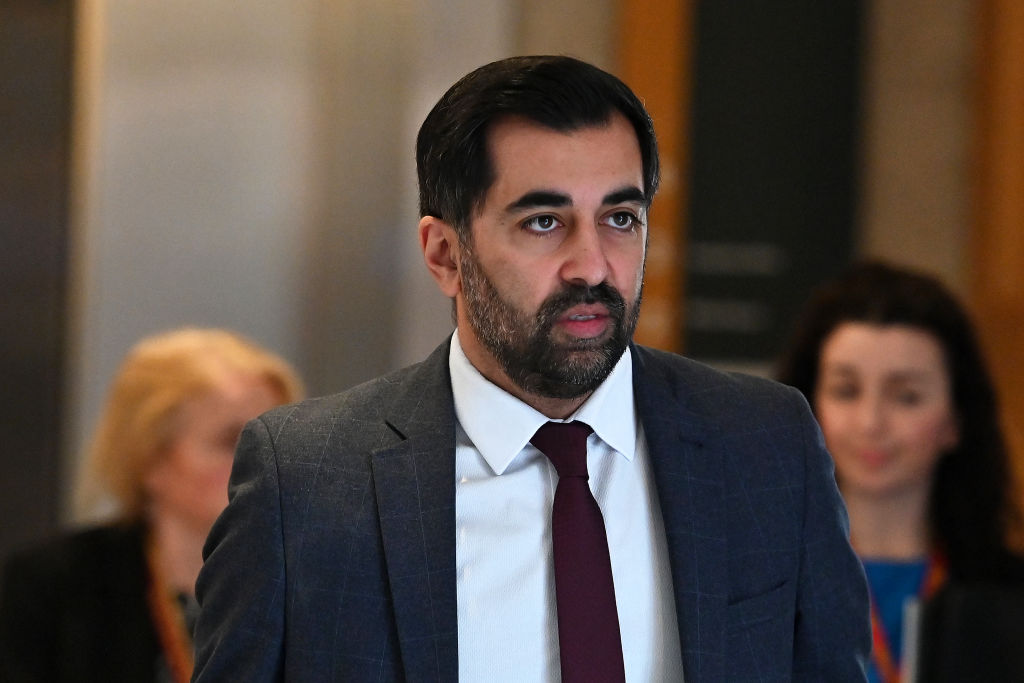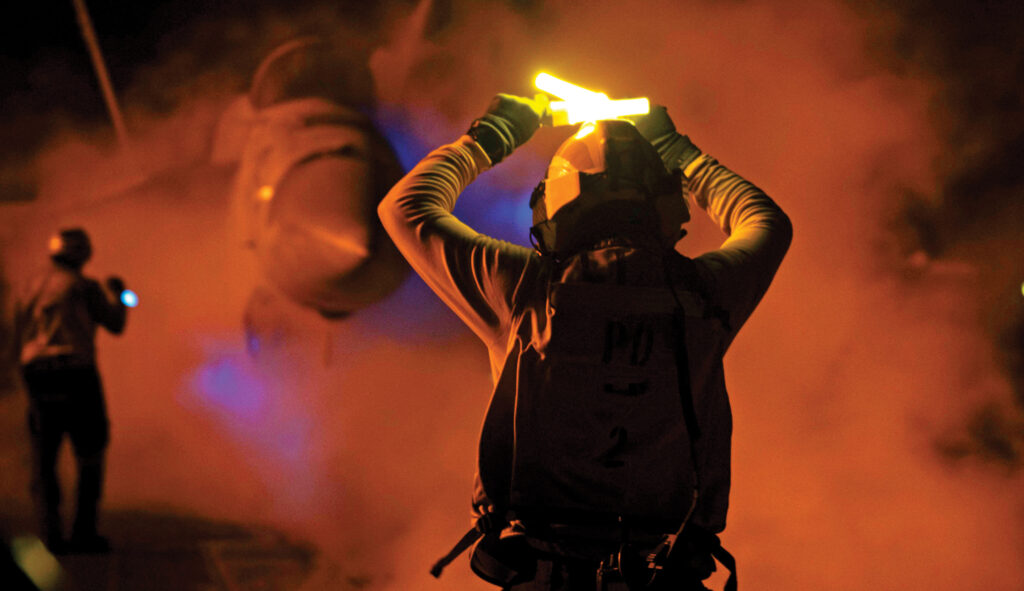Report: Students Thrived at Non-Lockdown Schools During Pandemic
While schools across the country decided to lockdown, imposing draconian “virtual learning” and mask mandates on children, some school districts found success in keeping a student’s life “as normal as possible.”
In the fall of 2020, when coronavirus protocols were in full force, Colorado’s Lewis-Palmer District 38 in the suburbs of Colorado Springs decided to go against the grain, according to the Washington Post.
They maintained full-time, in-person, mask-optional elementary school and hybrid-style middle and high school. Students with special education needs, however, were in-person every weekday. Extracurriculars like the band program and football team were brought back, too, with participating students not required to socially distance themselves.
“We didn’t just exist through the pandemic,” school district communications director Mark Belcher said. “We made progress through the pandemic.”
Lewis-Palmer, a school district serving about 6,600 students, saw no child hospitalizations from the virus and only two district employees who both had indefinite contract tracing results.
The school district also maintained its place in the 80th percentile in English and math nationally.
The heavy-handed coronavirus protocols on children at school have proven to be an educational and mental health disaster and one that could have been completely avoidable if decision-makers had chosen to heed the warnings of pediatricians early on.
Indeed, in the middle of 2020, the American Academy of Pediatrics urged school officials to open schools for in-person learning, warning of spiking depression, anxiety, and suicidal ideation among children.
Biden-appointed Surgeon General Vivek Murthy even pointed out that “depression and anxiety symptoms for youth around the world had doubled during the pandemic and that clinical data also revealed that ‘suspected suicide attempts were 51% higher for adolescent girls and 4% higher for adolescent boys compared to the same time period in early 2019.’”
“‘Pandemic-related measures … made it harder to recognize signs of child abuse, mental health concerns, and other challenges’ children were facing given the ‘reduced in-person interactions among children, friends, social supports, and professionals such as teachers [and] school counselors,’” Murthy’s study stated.
Along the way, however, teachers’ unions and misinformed parents were fighting for lockdowns and masking, oftentimes in the nation’s most populated school districts.
The results have been catastrophic.
Along with the aforementioned mental health issues, many of the nation’s children have suffered severe learning loss, with more than 33 percent of students who started school during the pandemic needing “intensive” reading intervention. Likewise, some school districts like Baltimore implemented new grading systems that allow students to fail classes but progress to the next grade anyway, resulting in students who are severely unprepared for life after high school. As Breitbart News reported, such a policy left 77 percent of one Baltimore high school’s student reading proficiency at an elementary or kindergarten level.
But students in the Lewis-Palmer district saw student reading levels improve where much of the rest of the nation fell dramatically behind. As the Post points out, while SAT scores saw little change, the district did fall somewhat behind in math; they did, however, remain ahead of the average student in Colorado, most of whom faced lockdown measures.
Indeed, third-grade reading assessments in the district showed improvement from a pre-pandemic 2019 58.2 percent proficiency to a 2021 60.2 percent proficiency. Statewide, proficiency dropped from 41.3 percent to 39.1 percent.
Fifth graders made reading gains between 2019 to 2021, as well. While this group dropped 1.2 percent statewide, Lewis-Palmer fifth-graders gained six percentage points to post a 75 percent 2021 reading proficiency.
According to district Superintendent K.C. Somers, the decision not to impose harsh restrictions on children was informed by data showing children under ten years old were not chief vectors of transmission, as well as information out of some European countries that in-person schooling did not result in outbreaks of the virus.
At a time when there were still unknowns about the virus, the school district and parents had to weigh competing outcomes: to risk the potential of a negative impact from the virus or knowingly risk the education, social development, and mental health of young people.
“With our kids being younger, the risk of social delays weighed heavily with us,” Kim Rhinesmith, a mother of two elementary students who sent her children back to full-time, in-person learning, said.
Lewis-Palmer 38 did initially close schools in March of 2020 along with much of the rest of the country, mandating “virtual learning” for the remainder of the school year. Educators reported not only academic challenges developing from students but also heightened levels of depression and anxiety.
After a district-wide survey showing 60 percent of parents “very likely” to return to in-person learning, with only 10 percent “very unlikely” — as well as 60 percent of teachers confident in the school’s ability to reopen safely and only 15 percent detracting — the school decided to reopen using heath guidance from El Paso County, Colorado’s, health department.
As the Post explains, Lewis-Palmer “took liberties” with the extent to which it followed El Paso’s guidance. For example, El Paso recommended children under the age of ten wear masks, but Lewis-Palmer decided only to implement such a requirement in hallways, keeping classrooms maskless.
“We wanted it to be as normal as possible, and children wearing masks is not normal,” Lewis-Palmer school board president Chris Taylor said. “The focus of the board was to give parents as much choice as possible — and children could wear masks if they wanted.”
Similarly, vaccination is not a requirement for participation in any activity in the school district, and according to the Post, “teachers and parents said people in the school district rarely discuss their immunization status.”
“We felt it was an infringement on staff confidentiality to ask about their vaccination status,” Somers said. “But we did encourage vaccines.”
The school district reported some shifting in enrollment and staffing. While some parents and teachers advocated for heavier restrictions — resulting in some who actually left the district — other families enrolled in the district specifically because of its position on coronavirus measures.
They still had instances of individual needs not being met by the school district, but it appears school leadership took a consistent interpretation of data from El Paso and decided on pursuing the wellbeing of the majority of students as opposed to requiring the entire student body to mask, for example, because a few students have significant comorbidities.
One mother, Angie Jones, tried to push the school to require masking because her son has cystic fibrosis and struggled with “virtual learning.” She said her son’s “needs were not being met” and “it felt like they didn’t care.”
Michelle O’Neil, another mother who requires special needs for one of her daughters who has Down syndrome, said that the school shutdown saw a regression in reading and math as well as the development of severe social anxiety.
But when Lewis-Palmer reopened — after panic attacks and significant adjustments — her daughter was able to regain her English and math skills by attending school full-time and in-person. According to the Post, she now has a boyfriend and attended the school dance.
Students who require special education services were some of the hardest hit during the shutdowns, and school districts across the country have admitted to failing these children and families. Some families said their children lost the ability to gain the skills they need to live an independent life.
Special needs students in Lewis-Palmer, which also admitted to failing special needs children when they shut down initially, showed more growth in English and math than their counterparts in the rest of the state.
“Everyone who regressed has already recouped the skills they lost,” high school special education instructor Brandy Doan said.
Breccan F. Thies is a reporter for Breitbart News. You can follow him on Twitter @BreccanFThies.
" Conservative News Daily does not always share or support the views and opinions expressed here; they are just those of the writer."




